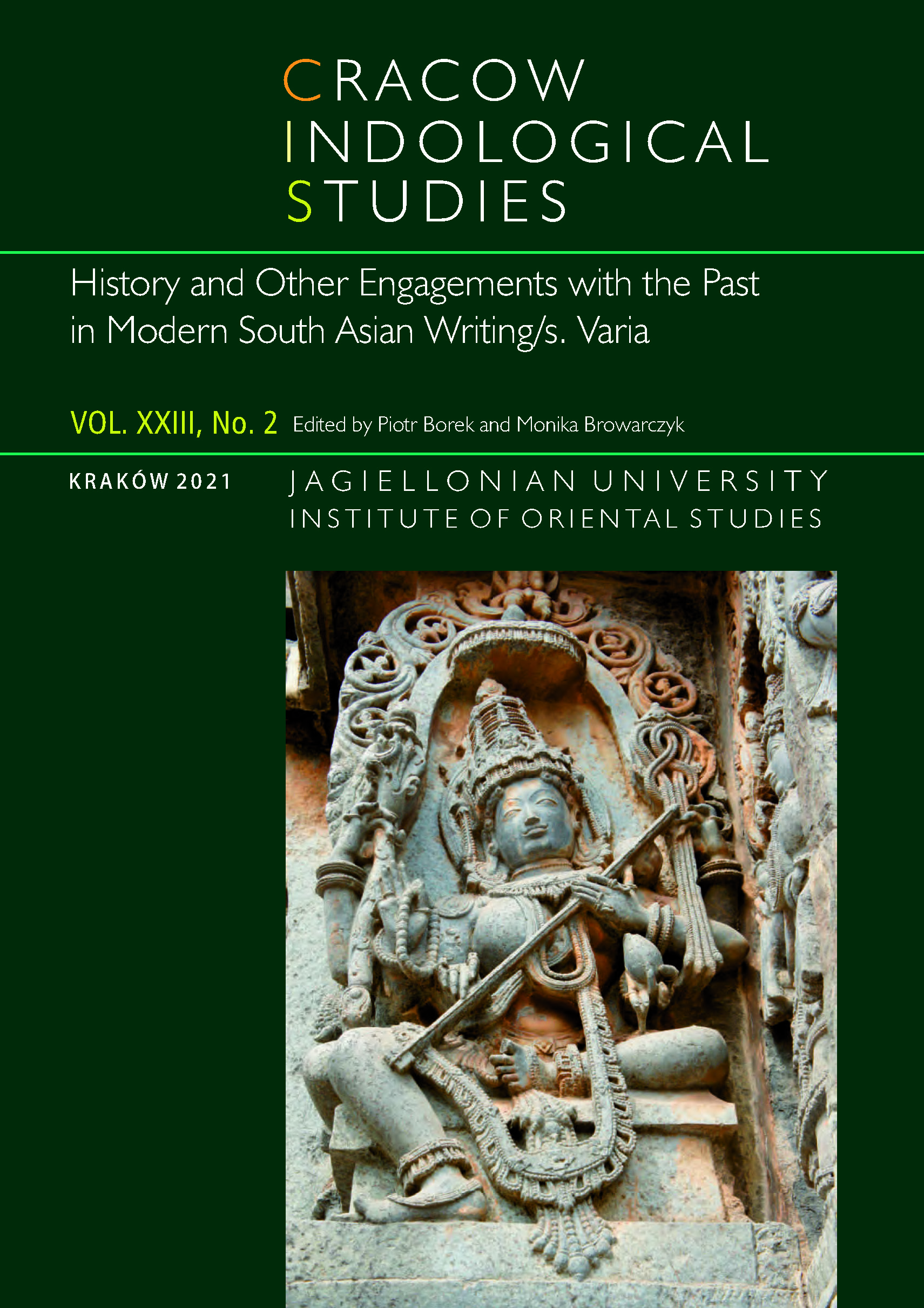Patronage over Literature, Translation and Print: Some Remarks on 1809 Edition of the Dabestān-e mazāheb Published in Print with the Support of the East India Company
DOI:
https://doi.org/10.12797/CIS.23.2021.02.05Keywords:
patronage, print in 19th century India, the East India Company, Persian literature in IndiaAbstract
Dabestān-e mazāheb is an interesting example of a 17th century text on various faiths and creeds of the Indian subcontinent. The present case study looks at possible explanations for its popularity claimed for it in the editorial note found in the first printed edition (1809) while simultaneously analysing reasons behind selection of this particular text for a print publication in the light of patronage extended by the East India Company to translation and printing of selected Indian writings. The process in this case is well documented in the correspondence of British officials such as Sir William Jones, but as to the reasons for the printing even more may be deduced from the highly ornate Persian peritext appended at the end of the 1809 edition by the book’s editor, Nazar Ashraf. The note provides an interesting testimony to the evolving fusion of the long tradition of manuscript writing and the advancements in printing which the paper explores.
References
ʻAmīd, H. 2011. Farhang-e fārsi-ye ‘amid. Tehrān: [Amir Kabir Press].
Ashraf, N. 1809. Editorial Note. In: N. Ashraf (ed.). Dabestān-e mazāheb. Kolkata: [s.n.].
Bayly, C. A. 1996. Empire and Information: Intelligence Gathering and Social Communication in India, 1780–1870. Cambridge: Cambridge University Press. https://doi.org/10.1017/CBO9780511583285. DOI: https://doi.org/10.1017/CBO9780511583285
Ashraf, N. 1809. Dabestān-e mazāheb. Kolkata: [s.n.].
Eisenstein, E. L. 2005 [11th print]. The Printing Press as an Agent of Change: Communications and Cultural Transformations in Early-Modern Europe, vol. 1–2. Cambridge–New York: Cambridge University Press.
Galewicz, C. 2020. Kingdoms of Memory, Empires of Ink: The Veda and the Regional Print Cultures of Colonial India. Kraków: Jagiellonian University Press.
Gladwin, F. 1789. The Dabistan or School of Manners. In: New Asiatic Miscellany. Calcutta: Press of Joseph Cooper: 86–136.
Johnston, A. 1843. Proceedings of the Twentieth Anniversary Meeting of the Society. In: Journal of the Royal Asiatic Society of Great Britain & Ireland, 7(14): 1–24. https://doi.org/10.1017/S0035869X00155996. DOI: https://doi.org/10.1017/S0035869X00155996
Mojtabā, I F. 1993. Dabestān-e maḏāheb. In: Encyclopaedia Iranica, vol. 6, fasc. 5. Encyclopædia Iranica Foundation: 532–534.
Nushāhi, A. 2013. Ketābšenāsi-ye āsār-e fārsi-ye čāp šode dar šebhe qārre-ye hend. Tehran: Mirās-e Maktub Press.
Ogborn, M. 2007. Indian Ink: Script and Print in the Making of the English East India Company. Chicago–London: The University of Chicago Press. https://doi.org/10.7208hicagoo/9780226620428.001.0001. DOI: https://doi.org/10.7208/chicago/9780226620428.001.0001
Rezāzāde-Malek, R. (ed.) 1983. Dabestān-e mazāheb, vol. 1–2. Tehran: Ketābxāne-ye Tahuri Press.
Stark, U. 2007. An Empire of Books: The Naval Kishore Press and the Diffusion of the Printed Word in Colonial India. New Delhi: Permanent Black Press.
Travers, R. 2007. Ideology and Empire in Eighteenth-Century India: The British in Bengal. Cambridge: Cambridge University Press. https://doi.org/10.1017/CBO9780511497438. DOI: https://doi.org/10.1017/CBO9780511497438
Shea, D. and A. Troyer 1843. Dabestān-e mazāheb. Paris: Benjamin Duprat, Bookseller to the Bibliothèque Royale and Allen and Co.
Williams Jackson, A. V. 1901. Special Introduction. In: The Dabistan or School of Manners. Washington–London: M. Walter Dunne.
Downloads
Published
Issue
Section
License

This work is licensed under a Creative Commons Attribution-NonCommercial-NoDerivatives 4.0 International License.
How to Cite
Funding data
-
Narodowe Centrum Nauki
Grant numbers 2018/31/B/HS2/02328






